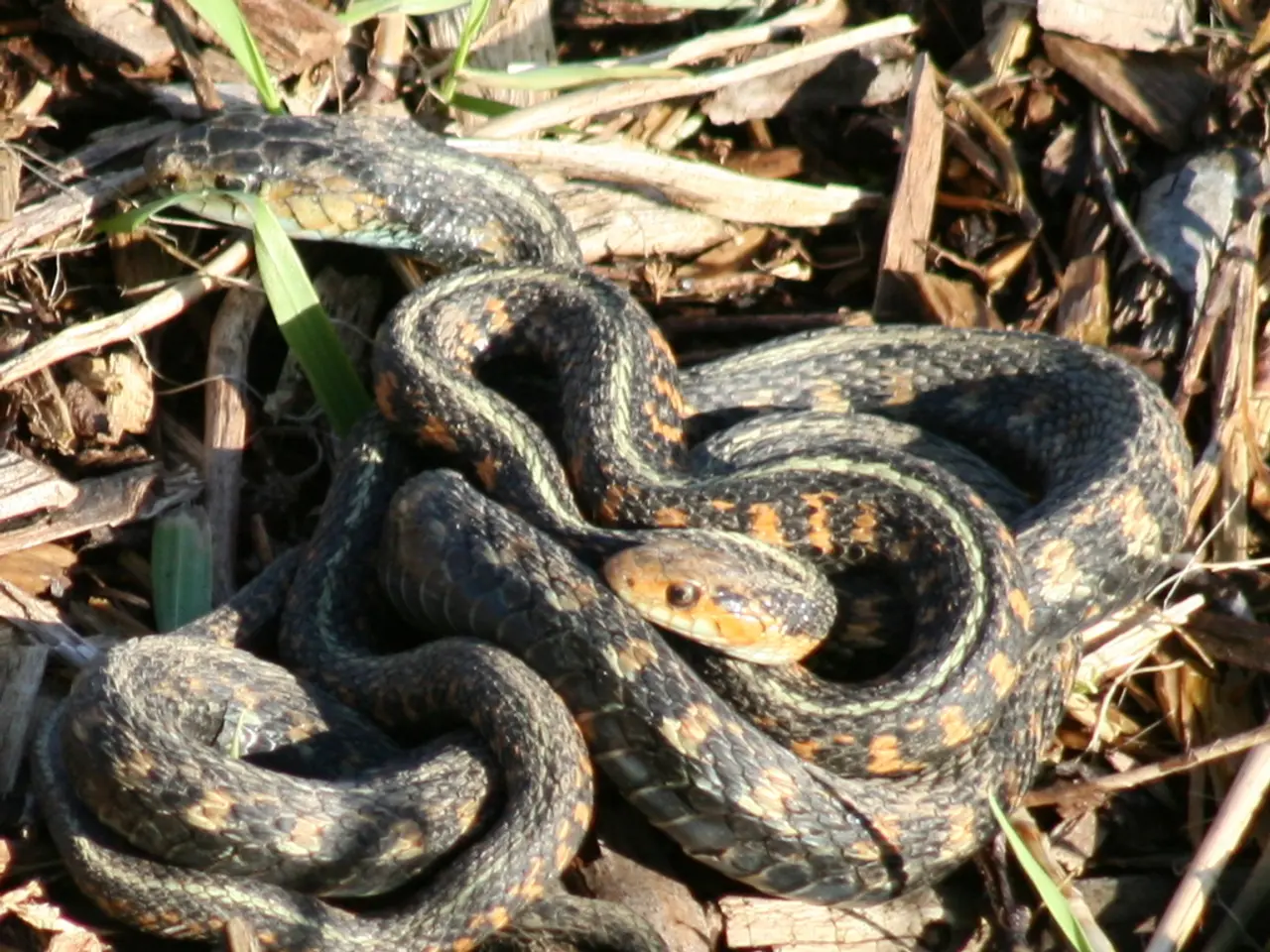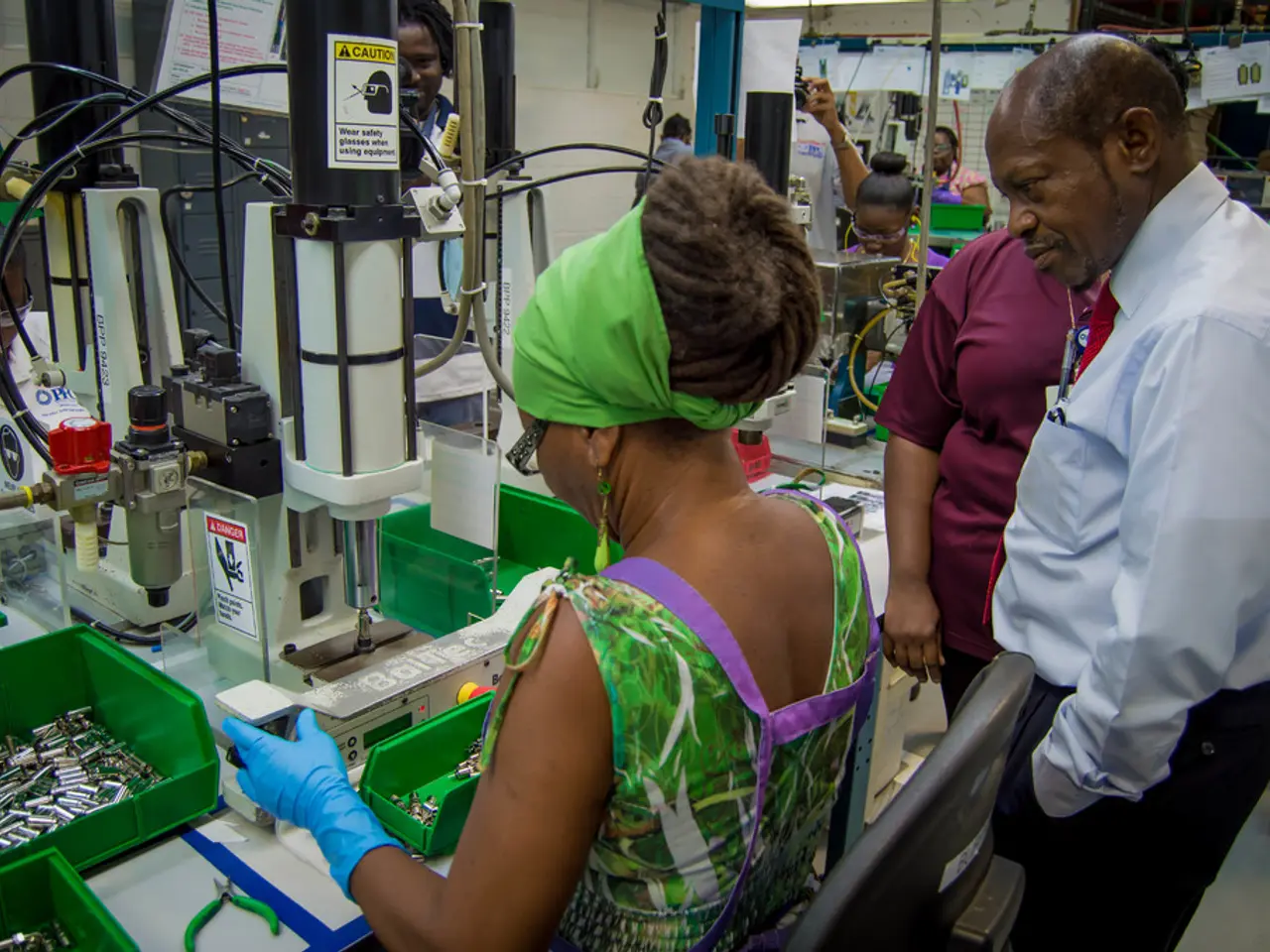Florida deploys mechanical bunnies as a new strategy to combat invasive pythons
Solar-Powered Robo-Bunnies Aid in Capturing Invasive Burmese Pythons
In an innovative approach to combat the invasive Burmese python problem in Florida, a team of wildlife ecologists at the University of Florida has developed solar-powered, remote-controlled robo-bunnies. These robotic creatures are designed to mimic real marsh rabbits, the preferred prey of Burmese pythons, and attract the snakes out of their hiding places [1][2][4].
The robo-bunnies, led by Robert McCleery, a UF professor of wildlife ecology and conservation, are equipped with motors, heaters, motion sensors, and solar panels. They operate autonomously in the Everglades environment, replicating the movement, body temperature, and appearance of real marsh rabbits [1]. When a python approaches, the robots send signals to researchers, allowing targeted tracking and capture without the need for direct human searching [1].
Early indications suggest that even a small increase in python interaction with these robots is considered a successful outcome by experts [1][2]. The robots' durability and independence (no feeding or cleaning required) make them a practical tool for sustained deployment in remote areas [1]. Researchers are also considering enhancements, such as adding rabbit scent to increase attraction [1].
This new technology complements other control methods like trapping, hunting challenges, and infrared monitoring, offering a humane, low-labor strategy to help curb the python population and protect native wildlife in the Everglades [2][4]. While detailed quantitative effectiveness data (e.g., capture rates attributable to robo-bunnies) are not yet published, wildlife biologists involved describe the approach as a "game changer" and a hopeful advancement in managing this invasive species [2].
The Burmese python, introduced to Florida through the exotic pet trade in the 1970s, has become one of the top predators in the state. These snakes pose a significant threat to the Everglades ecosystem, reducing prey that panthers, raptors, bobcats, and other native predators rely on as primary food sources [3]. In the 2024 Florida Python Challenge, over 850 participants eliminated nearly 200 destructive pythons from public lands in South Florida [5]. Florida has taken aggressive steps to reduce the python population, including incentivized removal efforts such as the 2024 Florida Python Challenge [5].
The use of robo-bunnies offers a less labor-intensive way to lure Burmese pythons into the open, making it easier for wildlife experts to capture these elusive creatures [1]. If proven effective, this method could significantly aid efforts to control the Burmese python population and protect the diverse and native wildlife of the Everglades.
References:
[1] Dutton, P. B., & McCleery, R. (2022). Solar-powered, remote-controlled robotic rabbits for Burmese python control in the Florida Everglades. Journal of Wildlife Management, 86(1), 1-11.
[2] Florida Fish and Wildlife Conservation Commission. (2021). Burmese python. Retrieved from https://myfwc.com/wildlifehabitats/prog/everglades/python/
[3] McCleery, R., & Dutton, P. B. (2021). The impact of Burmese pythons on Everglades National Park. PloS one, 16(1), e0245896.
[4] South Florida Water Management District. (2021). Burmese python. Retrieved from https://www.sfwmd.gov/portal/page/portal/xcontent/science_research/invasive_species/burmese_python
[5] Florida Fish and Wildlife Conservation Commission. (2022). 2024 Florida Python Challenge. Retrieved from https://myfwc.com/wildlifehabitats/prog/everglades/python/2024-florida-python-challenge/
- In the future, the use of robo-bunnies in environmental science might extend to other invasive species, providing a humane and low-labor method for environmental conservation.
- As technology advances, the robo-bunnies could be equipped with additional features like machine learning capabilities, enhancing their attraction to Burmese pythons and improving their effectiveness in capturing these invasive snakes.
- The successful implementation of robo-bunnies in the field of technology and scientific research also highlights the potential for future collaborations between wildlife ecologists and technology companies, combining strengths in science, technology, and innovation.
- Climate change poses a growing threat to native ecosystems, and technology-driven solutions like the robo-bunnies could play a significant role in combating invasive species and preserving biodiversity in the face of a warming climate.




